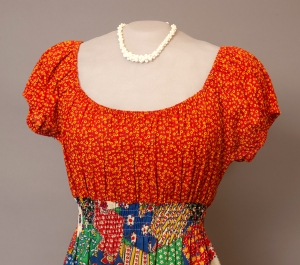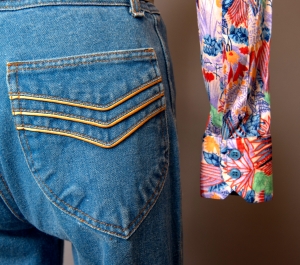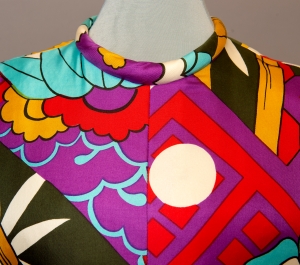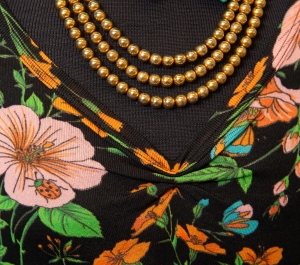Exhibitions and Collaborations
Vibrant Patterns and Prints: Cotton Endures in the 1960s & 1970s
The rise in emphasis on youth and individuality in the 1960s and 1970s led to brighter, bolder prints and colors. Multiple social movements focusing on gender, race, and ethnicity led to a greater social acceptance of new forms of self-expression through fashion. This can also be seen in aesthetic movements of the era such as op art, pop art, romantic nostalgia, and the integration of global, non-European influences.
By the 1960s synthetic fibers had exploded into the textile market. With the popularity of multiple new synthetic fibers, cotton faced stiff competition as many manufacturers turned to polyester and other synthetics for their garments. These synthetics were initially promoted because of their resistance to wrinkles and ease of care, however the value of cotton’s breathability and comfort could not be outdone. Thus, cotton blends were promoted as the best of both worlds, offering garments which were both comfortable and easy-care.
The 1960s and 1970s represented a period of great change that resulted in vibrant prints and patterns as well as experimentation with fibers and fashion design. Cotton endured the introduction of new technologies and synthetics, continuing to adapt in order to meet consumer preferences.
Exhibit Dates: July - October 2021, Technology Building, 3rd Floor Display Case
Photograph: Bruce Fox
Funding: Cotton Incorporated

Fabric designers used vintage quilts as inspiration for print designs.

Jeans became a staple in every person’s wardrobe by the 1960s and 1970s.

Fabric designers gathered inspiration from many regions of the world.

Women explored fun, bright patterns like this botanical print.

Men explored more colors and patterns in the 1960s and 1970s like this bright, plaid pair of pants.

